Sony Alpha A700 Digital SLR Review
Sony Alpha A700 Digital SLR
Sony's second digital SLR is taking on semi-pro cameras from the market leading makers. How does it stand up to the competition?
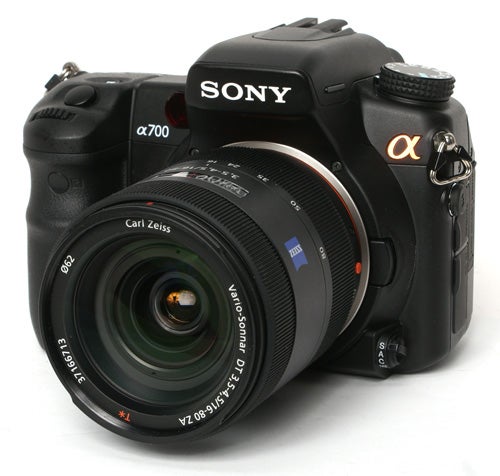
Verdict
Key Specifications
- Review Price: £949.00
The digital SLR market is dominated by Canon, with a share of around 47 percent for its eight-model range. In second place is Nikon, who’s seven models have around 33 percent of the market. In third place is Sony, with a market share of roughly 6.2 percent. That may not sound like much in numbers, but it has achieved this in just a year and a half and with only one model, the amazingly successful Alpha A100 digital SLR. At the launch event for that camera, a Sony representative stated the company’s intention to shoulder its way into the market and challenge the long-established leaders, and like most of the other journalists present I was somewhat sceptical, however I will gladly admit that I was wrong to doubt. Sony has succeeded in leapfrogging industry veterans Pentax, Olympus, Kodak and Sigma, and Nikon must be glancing nervously into the rear-view mirror, because Sony has just launched a new model aimed at the hobbyist and semi-professional photographer, the Alpha A700.

While the entry-level A100 was aimed at the end of the market dominated by the Canon EOS 400D and Nikon D40, the A700 is going after the mid-level territory of cameras such as the Canon EOS 40D and Nikon D300. If it succeeds as well as the A100 then the next eighteen months could see Sony moving into second place ahead of Nikon, and having now spent some time with the camera, I’d say that both Nikon and Canon have good reason to be worried. The A700 is an extremely impressive camera both in the flesh and on paper. It features Sony’s brand new Exmor 12.23-megapixel APS-C CMOS sensor, the proven Super SteadyShot moving-sensor image stabilisation system, a rugged environmentally-sealed magnesium alloy body and an ultra-sharp three-inch LCD monitor. Its performance claims are equally impressive, with 5fps continuous shooting, an 11-point cross-type AF system, maximum sensitivity of 6400 ISO and a maximum shutter speed of 1/8000th of a second.
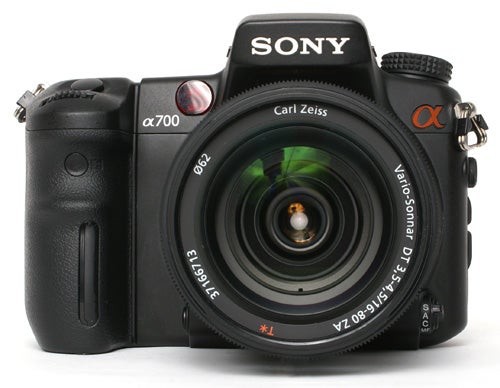
The A700 is currently available for around £949 body-only, £999 with the standard 18-70mm f3.5-5.6 Sony kit lens, or £1499 with the superb Carl Zeiss T* 16-80mm f3.5-4.5 lens. This is significantly more expensive than the 10-megapixel Canon EOS 40D which is currently selling for £749 body-only or £949 with a 17-85mm f4-5.6 USM lens, but is somewhat cheaper than the 12-megapixel Nikon D300, which is priced at £1299 body-only or £2139 with the 17-55mm f2.8 AF-S DX lens. Sony is clearly hoping that the extra resolution of the A700 will attract potential buyers away from the cheaper Canon, while the lower price will tempt those who would otherwise have opted for the Nikon. The only fly in the highly lucrative ointment could be the impressive 10-megapixel Pentax K10D, which is currently available for just £449 body-only or £733 with an SMC-DA 16-45mm f4 lens.
Sony got something of a head start in the digital SLR field by inheriting Konica-Minolta’s technology and lens mount when that company pulled out of the camera business in 2005, and anyone who is familiar with Konica-Minolta’s camera range will notice many similarities between the A700 and the Dynax 7D launched in 2004. The overall shape of the body and the layout of many of the controls are virtually identical, and in many ways the A700 can be seen as a development from the Konica-Minolta design. However these similarities are really only superficial; the A700 is in every other respect a completely new camera.
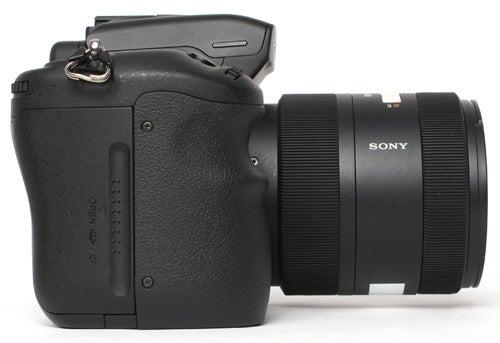
The initial impression is extremely positive. For anyone who is used to handling digital SLRs, the A700 certainly feels like a grand’s-worth of camera, but it is surprisingly light by comparison to other semi-pro models. Measuring 141.7 x 104.8 x 79.7mm and weighing 690g sans lens, it smaller and lighter than the Canon EOS 40D at 146 x 108 x 74mm and 740g, the Nikon D300 147 x 114 x 74mm and 825g. The closest match in terms of physical dimensions is the Pentax K10D at 142 x 101 x 70mm and 710g. Nonetheless the A700 feels large and reassuringly solid in the hand, in fact some people with smaller hands have commented that the camera’s handgrip is too large to be comfortable. I can see what they mean; I have particularly large hands, but even I found it to be quite a handful. A secure two-handed grip is essential especially when using a longer lens.
Most manufacturers try to keep some consistency in the control layout between their various models, so that people who are upgrading from one body to another with find the controls familiar. However with the control layout being based on the Minolta Dynax 7D the A700 has a completely different interface to the easy-to-use A100, which will be confusing and somewhat irritating for anyone moving up from the entry-level model. The only similarity between the control layouts of the two cameras is the position of the on/off switch. The main mode dial is now on the left of the top panel, with separate external buttons for ISO, white balance, drive mode and metering mode instead of the A100’s dial-and-button system. Sony has also opted for the type of on-screen graphic interface first used by Olympus on the E-500. Pressing the ‘Fn’ button highlights an option on the monitor status display, and the joystick is then used to navigate around this and select which parameter to change. It’s a very intuitive system for anyone who has used any type of computer software, and is a very quick way to adjust frequently-used settings.
For exposure adjustments the A700 has a dual-wheel input, as do most high-end SLRs, with one wheel on the top of the handgrip just in front of the shutter button, and the other on the back positioned under the right thumb. Both wheels are larger than the single wheel on the A100, and are slightly easier to turn. All of the controls have a solidly positive feel to them, although I did fond the metering mode and focusing mode selectors, both of which are small multi-position dials, to be a bit fiddly. I’m also not particularly fond of the small joystick that replaces the more usual D-pad. It has a press-in action to confirm selections, but I really prefer a conventional D-pad with a centre button, such as the one on the A100. I dare say I’d get used to it in time, but at least initially it felt a bit awkward and fiddly.
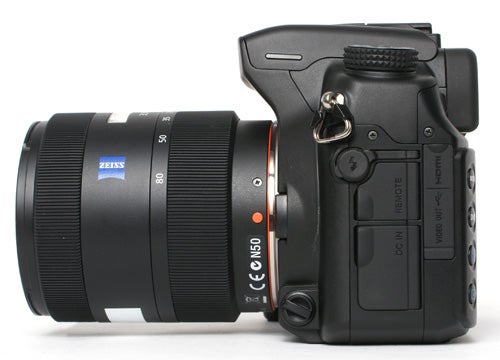
Other notable external features include a powerful AF assist lamp with a range of around 7m, and a row of ports on the left-hand end of the camera. These include the DC power input, the socket for the remote electronic cable release, a flash sync socket for connection to a studio flash system and a combined USB/Video port. It also includes an HDMI socket, currently a unique feature on a digital SLR, which allows the camera to be connected to a HD TV set. If it is connected to a Sony Bravia TV it offers something called Photo TV HD mode, which includes fully optimised HD picture viewing. I’m not sure that this will be a selling point to many professional photographers, but it does offer the option of presenting preview photos to friends or clients on a large screen at maximum quality, which could be handy if you happen to own a new Sony LCD TV. All the socket hatches are covered by rubber plugs which actually have hinges, rather than the usual flexible rubber straps, which means they stay open when they have to and close securely to keep out dust and moisture.
In terms of features the A700 certainly acquits itself well in comparison to the competition. A major selling point is of course the body-integral Super SteadyShot moving-sensor image stabilisation system, which has been improved from the version on the A100 to take account of the new model’s extra weight, and now offers a maximum of four stops of extra stability when shooting at slow shutter speeds. I personally prefer this type of image stabilisation to the lens-based optical system used by Canon and Nikon. While is doesn’t stabilise the view through the viewfinder, it does mean that lenses are generally smaller, lighter and less expensive, and works with even the cheapest lens in the system. With the stability of the heavier chassis and smooth operation of the shutter release I found that with care I was able to take some very long exposure shots hand-held, including some at exposures of several seconds, although obviously this is not recommended.
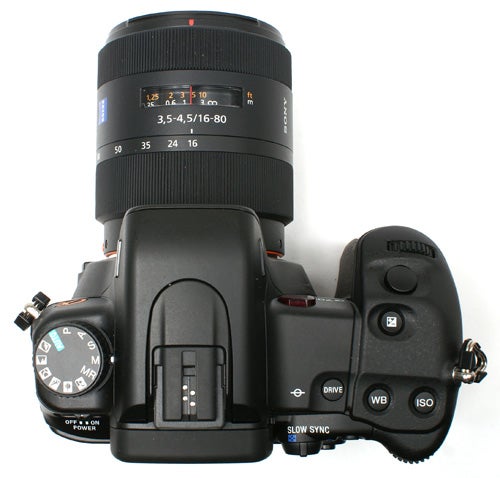
A well-justified complaint levelled at the A100 was its relatively loud shutter and mirror action, but this has been much improved on the A700. Although it is still somewhat louder than Canon’s whisper-quiet EOS 40D, it is now much smoother and quieter. Having drawn disapproving glances from the congregation when using the A100 to take wedding photos during a service, I used the A700 for the same task without embarrassment.
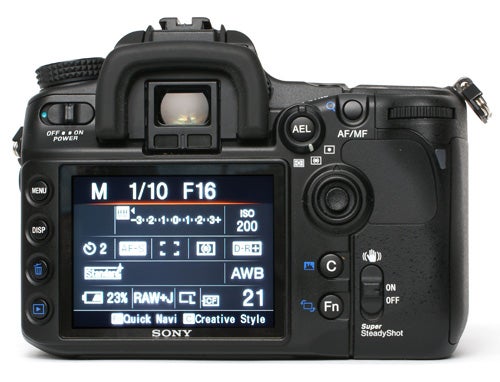
Another big improvement over the earlier model is the AF system, which now has eleven sensors with a cross-type centre sensor for increased speed and accuracy. The focus points are spread out quite widely over about half of the frame area, with the outermost positions being half-way between the centre and the edge. It is without question one of the best AF systems I have ever encountered, focusing quickly and accurately in all lighting conditions. I tried it out at a firework display, snap-shooting at the fireworks as they burst overhead, and found that it was able to focus on the explosion in a fraction of a second and capture the shot just as the firework reached full bloom When shooting fireworks it’s usual practice to use a tripod, but I found that I was able to capture some good shots this way hand-held, which is quite a feat for any camera.
Shooting speed has also been improved thanks to Sony’s fast BIONZ image processor chip. Shooting in the RAW+JPEG mode that most serious photographers will prefer, in single shot mode the A700 has a consistent shot-to-shot time of approximately 0.6 seconds, while in high-speed continuous shooting mode it can fire off ten frames in just over two seconds before having to pause to write the buffer contents to the memory card. This takes around 15 seconds, but writing is sequential so the camera can shoot single frames almost immediately. There is also a slower 3fps continuous mode. Shooting in JPEG Extra Fine mode, the performance is a bit more irregular. In continuous mode it fires four frames at either 3fps or 5fps, but then slows to around 1.5fps, which rate it appears to be able to maintain until the memory card is full.
Also improved is the Dynamic Range Optimiser (DRO) feature, which now has three levels of operation, providing extra user control over this vital feature.
The A700 is a bit of a memory hog. Shooting in the almost uncompressed Extra Fine mode it produces very large files averaging around 9MB, which is great for picture quality but does mean that a 1GB memory card is enough for only 93 shots. In RAW + JPEG Fine mode the 1GB card is only enough for 39 shots, but there is also a compressed RAW mode which increases this to 53 shots with minimal reduction in quality. Battery life is also good, with Sony claiming 650 shots on a full charge. The A700 also includes Sony’s proprietary InfoLithium system, so that remaining battery life is shown as a percentage figure, a lot more useful than the ‘four bars’ system used by most other manufacturers.
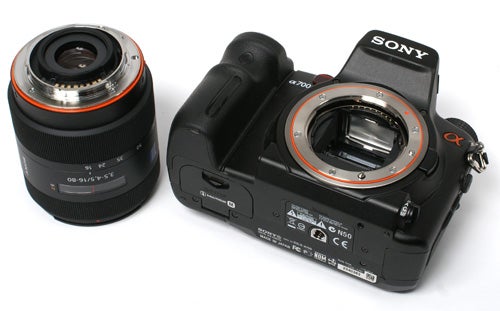
The A700’s menu system reveals a huge amount of user control, with useful features such as selectable minimum and maximum settings for auto ISO, three levels of high-ISO noise control, and seven Creative Style options, each of which is configurable with +/- 3 steps in contrast, saturation and sharpness. There are many more features which deserve more explanation, but this review is already turning into a bit of an epic so if you want to learn more I’d suggest going to Sony’s website and downloading a brochure.
Of course the crucial area on which any new camera will stand or fall is image quality, and here Sony has really scored. All that sophisticated technology really does work, and the A700 produces some of the best images I’ve seen from a digital SLR, and certainly from one in this price bracket. With the excellent Carl Zeiss T* lens providing virtually perfect edge-to-edge sharpness, the ultra-fast AF system proving virtually infallible and the very low file compression making the most of it all, the A700 turns in superb results in virtually all circumstances. High-ISO noise control is excellent, with printable images showing good detail and colour at 3200 ISO. The actual gain in overall detail compared to a good 10MP DSLR is marginal, but there’s no denying that overall image quality is up there with the very best. If you were considering buying a Nikon D300, Pentax K10D or Canon EOS 40D, you really should take a look at the A700. You will not be disappointed.
”’Verdict”’
Having produced what is arguably the best entry-level DSLR on the market in the A100, Sony has followed it up with another outstanding camera. The A700 is a superb tool for the enthusiast or semi-professional photographer, providing high quality results in almost any conditions. The combination of rugged durability, fast performance, a class-leading AF system, on-board image stabilisation and great handling will prove hard to beat.
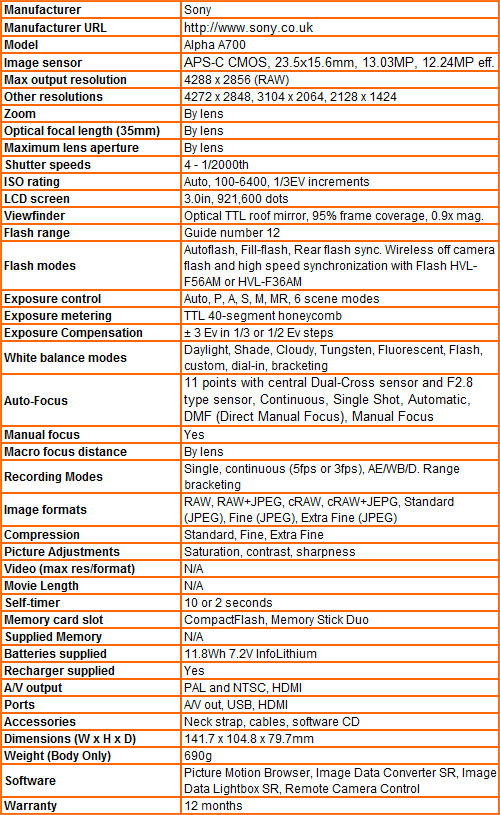
”Over the next few pages we show a range of test shots. On this page the full size image at the minimum and maximum ISO settings have been reduced to let you see the full image, and a series of full resolution crops have taken from original images at a range of ISO settings to show the overall image quality.”
—-
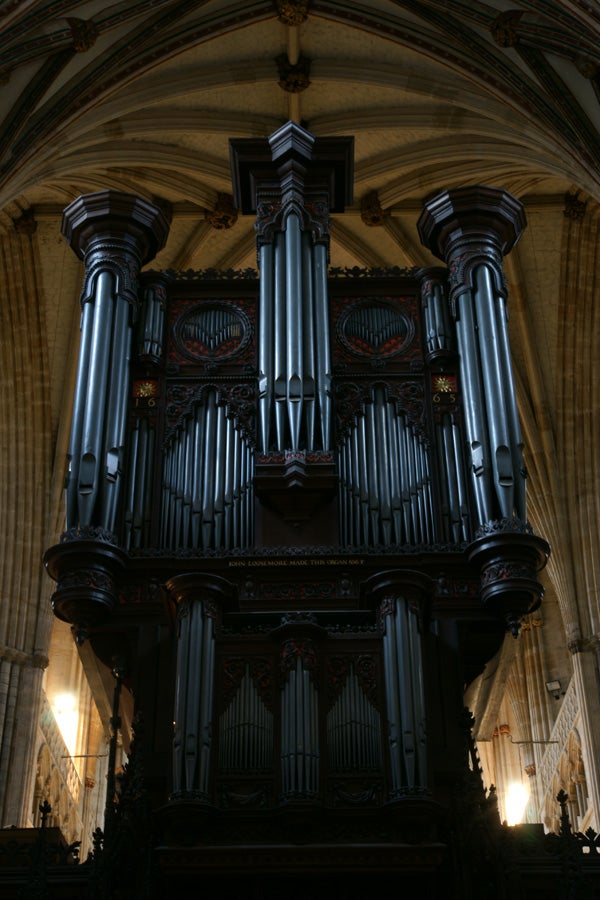
This is the full frame at 100 ISO. The A700 has a manual ISO setting range of 100-6400 in 1/3EV steps. I’ve only shown the full-stop settings here for brevity.
—-
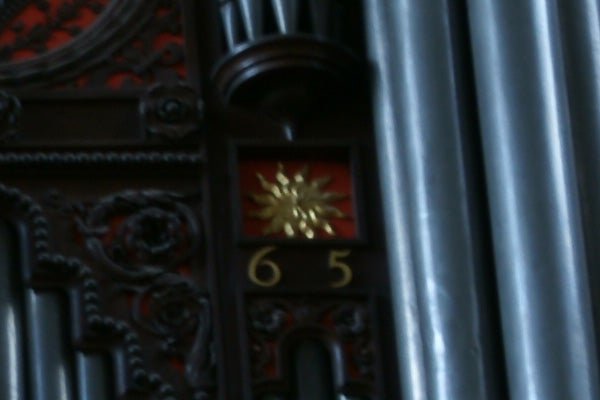
On a 13-second exposure at f/16 and 100 ISO. The slight motion blur is actually caused by the organ itself vibrating.
—-
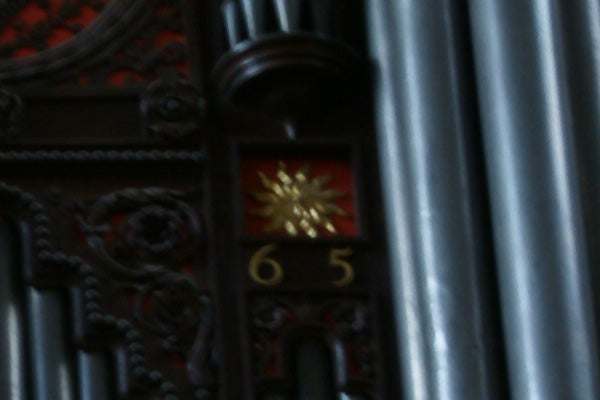
6 secs at f/16 and 200 ISO, and still no image noise.
—-
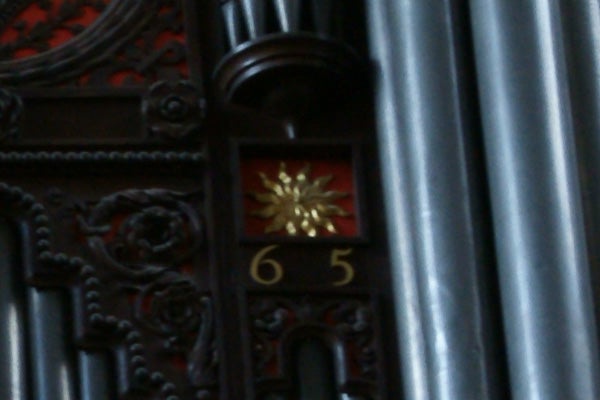
3.2 seconds at f/16 and 400ISO. The music had stopped at this point, so the picture is a bit sharper. Still no image noise.
—-
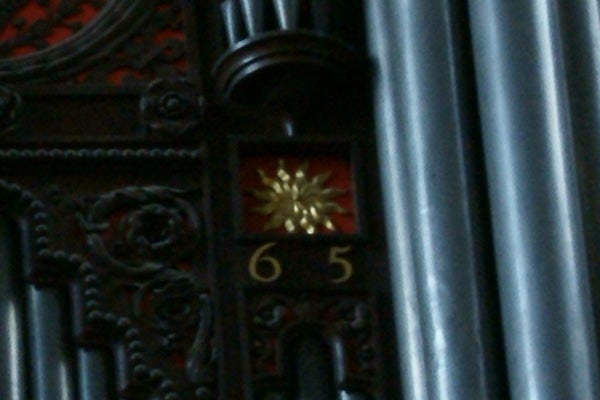
1.6 seconds at f/16, 800 ISO. Still no visible noise at this setting.
—-
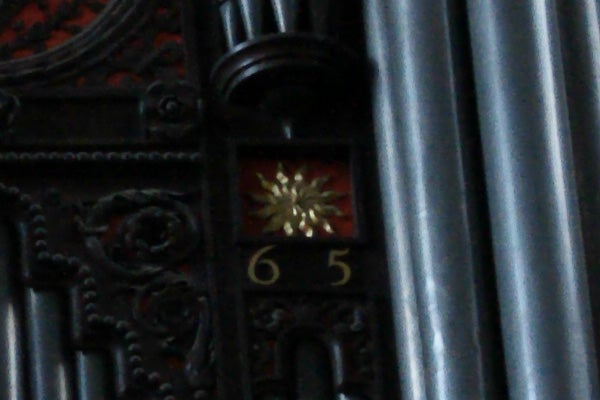
0.8 sec, f/16, 1600 ISO. There is a faint trace of colour speckling creeping in at this setting, but the image quality is still very high.
—-
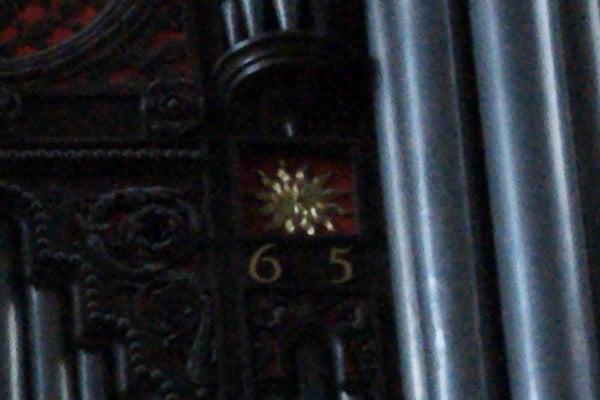
0.4 sec, f/16, 3200 ISO. There is a little more noise, but you could still get a good A4 print off this.
—-
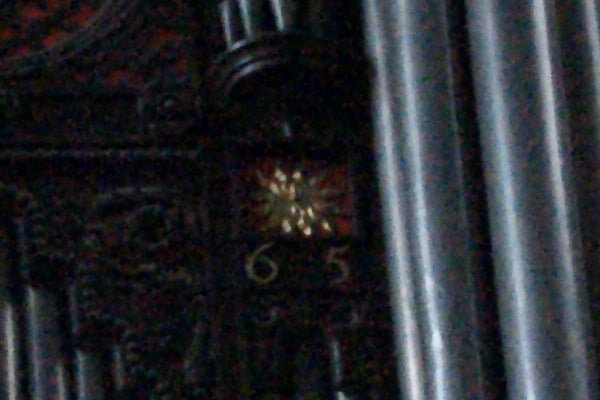
1/5th sec, f/16, 6400 ISO. There is significant noise at this setting, and colour rendition has suffered accordingly, but it is still just about usable.
—-
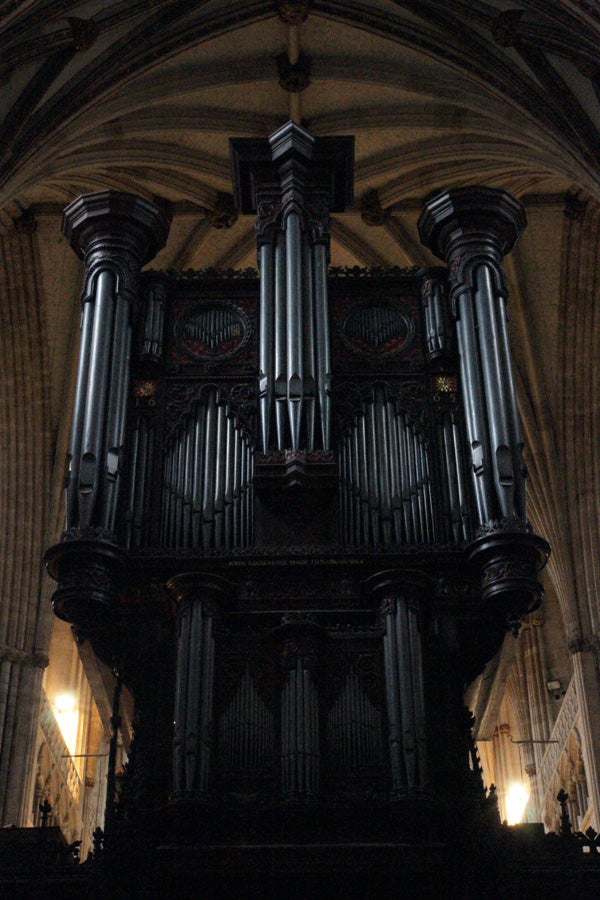
This is the full frame at 6400 ISO.
—-
”A range of general test shots are shown over the next two pages. In some cases, the full size image has been reduced for bandwidth purposes, and a crop taken from the original full resolution image has been placed below it to show the overall image quality. Some other pictures may be clicked to view the original full-size image.”
—-
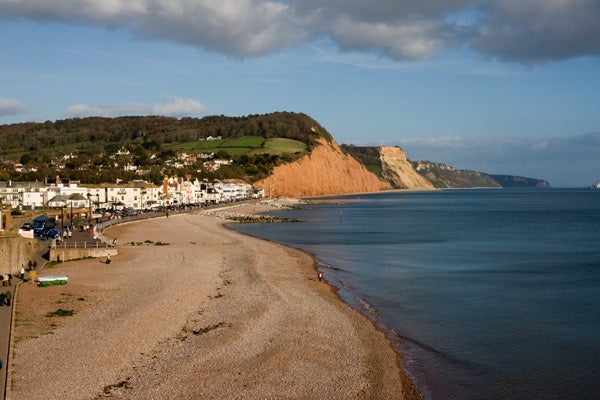
This is the shot I usually take to test digital SLRs. Compare this with some previous reviews of 10MP cameras such as the Nikon D80 or the Canon EOS 400D.
—-
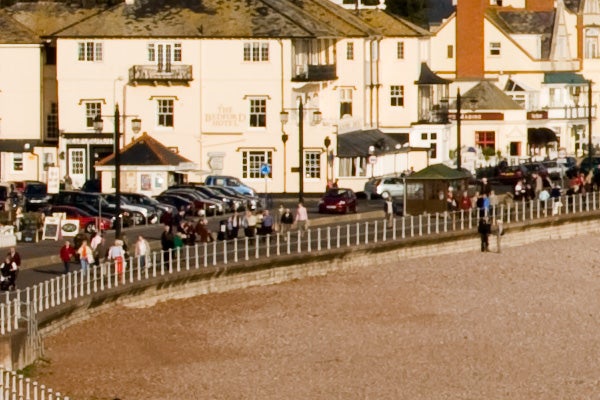
As you can see there isn’t a big gain in overall detail going from 10 to 12 megapixels, but the overall quality is superb.
—-
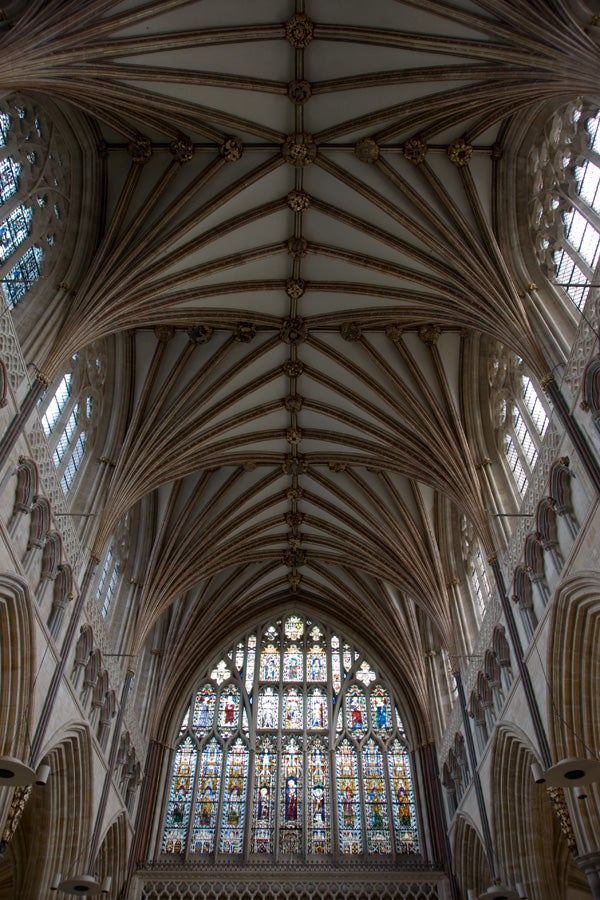
Using the Carl Zeiss T* 16-80mm lens, the edge-to-edge detail is superb, and the Dynamic Range Optimiser (DRO) has ensured a good balance between highlight and shadow.
—-
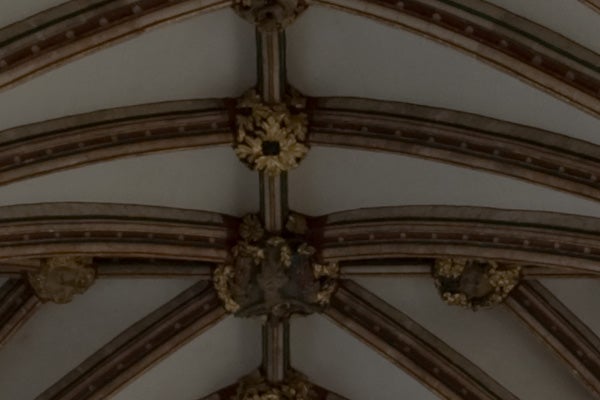
This is a crop from the centre of the above image.
—-

Edge detail is just as good.
—-
”This page consists of resized images so that you can evaluate the overall exposure.”
—-
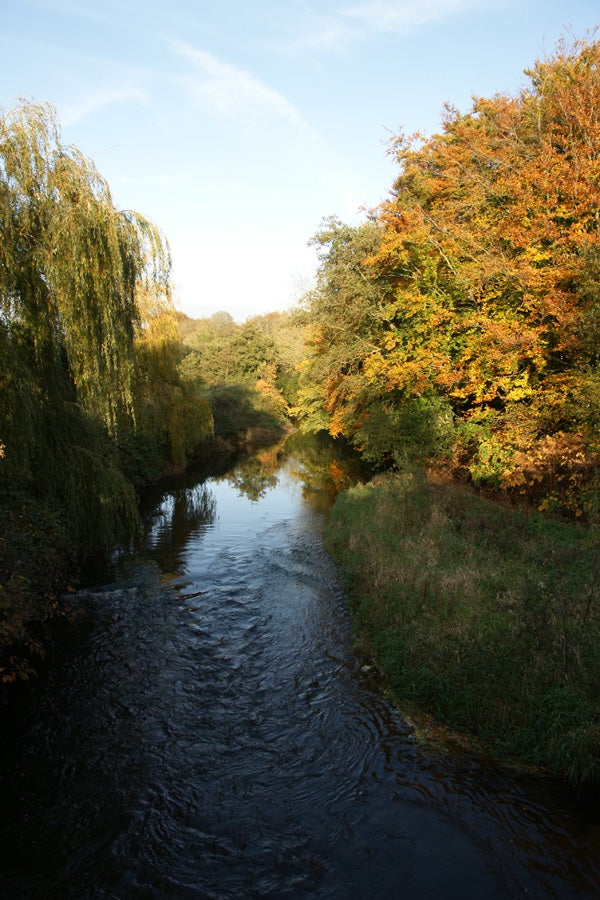
Perhaps I should enter this in our photo competition. Who knows, I might even win…
—-
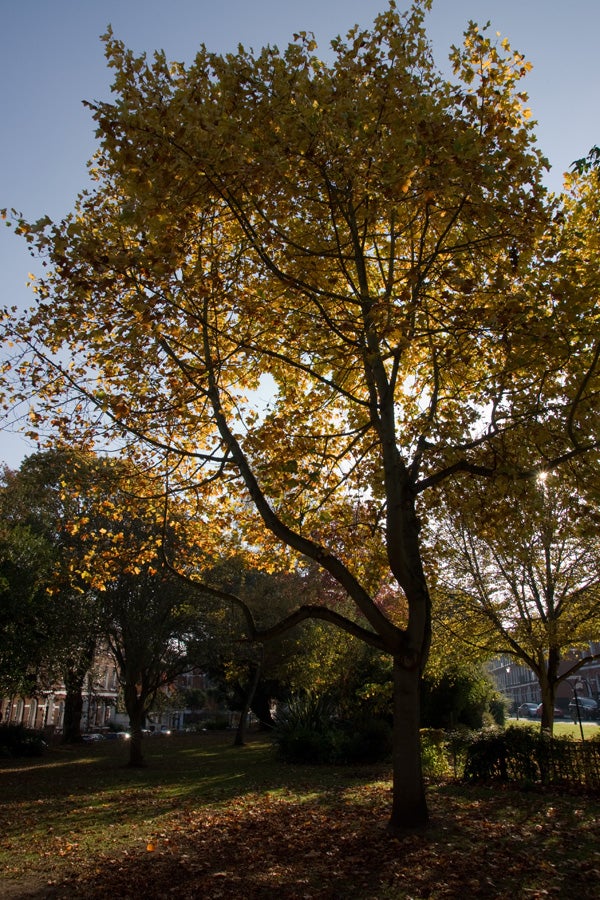
High contrast is no problem thanks to the DRO system.
—-
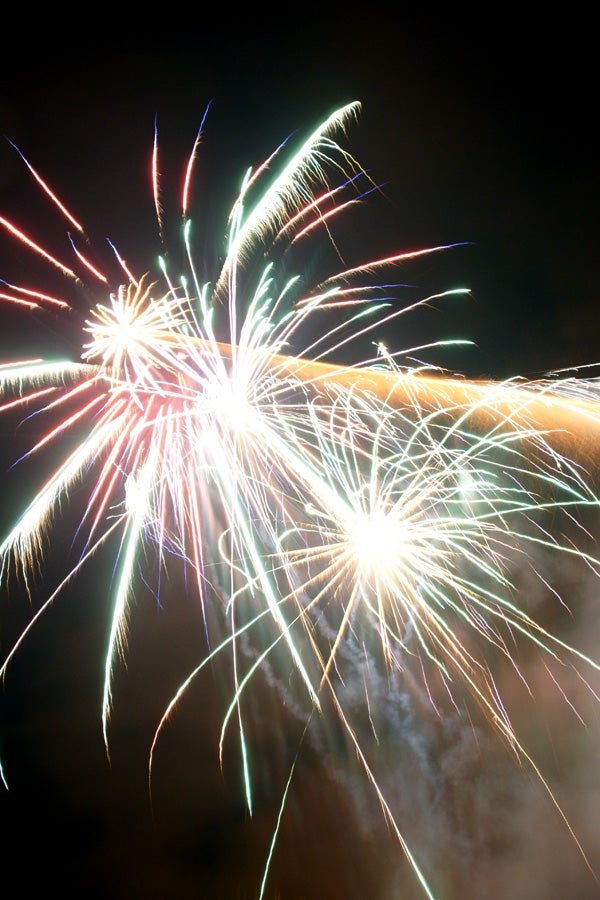
This photo was taken hand-held at a shutter speed of 8 seconds. The camera had no problem focusing on the fireworks as they exploded overhead.
—-
Trusted Score
Score in detail
-
Value 8
-
Image Quality 10
Features
| Camera type | Digital SLR |
| Megapixels (Megapixel) | 12.33 Megapixel |
| Optical Zoom (Times) | By lensx |

